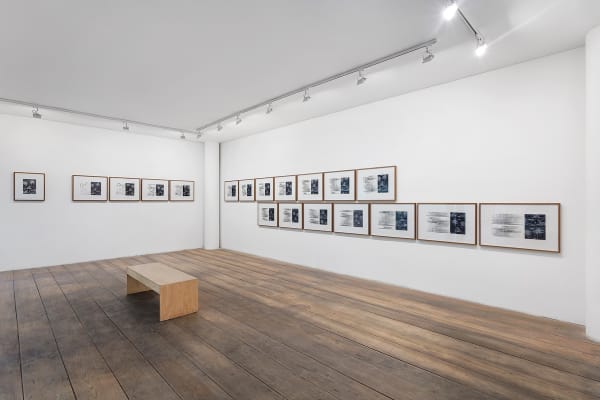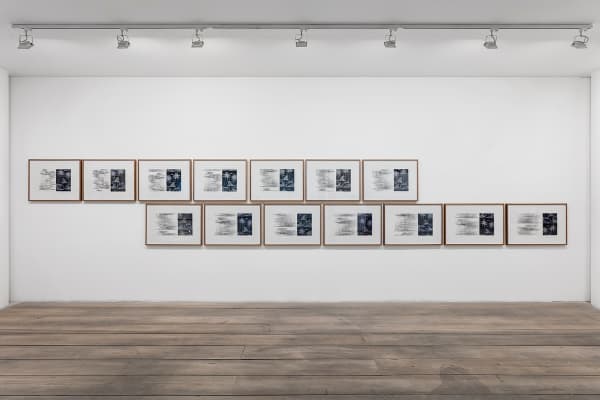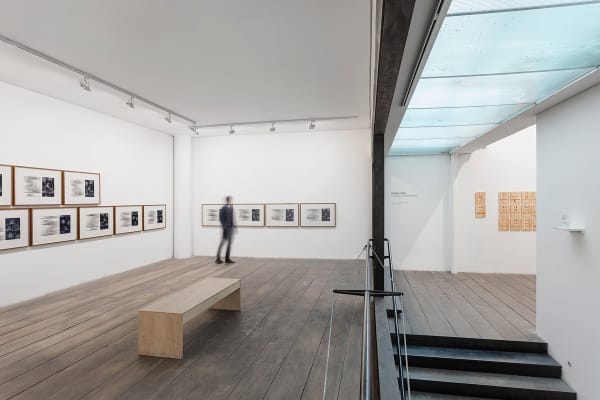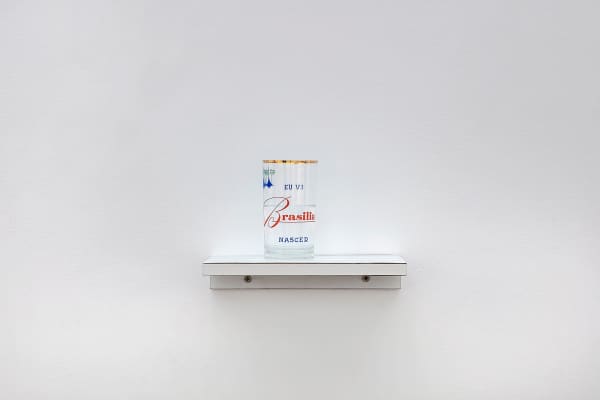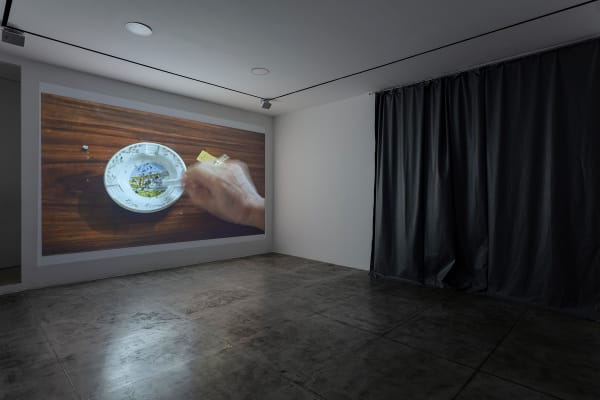BRUNO FARIA: O SERTÃO VAI VIRAR MAR
BRUNO FARIA
O sertão vai virar mar
TEXT
Guilherme Wisnik
OPENING
Saturday, September 24, 2022
EXHIBITION PERIOD
Sep 24 - Oct 29, 2022
VISITING TIME
Mondays to Fridays, from 10:30am to 7pm /
Saturdays, from 11am to 4pm
Tel: +55 11 3079-0853 /
Whatsapp: + 5511 96082-3111
In his new solo show, Bruno Faria brings different historical perspectives from Brazil and shifts the landscape from the northeast to São Paulo
In O SERTÃO VAI VIRAR MAR, at Galeria Marília Razuk, the artist brings an unprecedented set of installations, drawings, paintings and a video and proposes new narratives about the history of the country.
Immersed in the history of Brazil and in the landmarks that defined the contemporary identity of the country, Pernambuco artist Bruno Faria unfolds his current artistic production. To his new exhibition, O SERTÃO VAI VIRAR MAR, on view from September 24 at Galeria Marília Razuk and with text by the critic Guilherme Wisnik, he brings installations, drawings, paintings and a video where he shares his reflections and criticisms with the public. about historical moments such as Guerra de Canudos and Grito da Independência, making a parallel with the political storms experienced in Brazil today.
Opening the exhibition, the installation Desarranjo (2022), turns the walls of the Gallery into a large musical score that, instead of bringing musical notes, features perforations and holes. Composing the work, a record player reproduces Grito da Independência.
“This work is born from the history of the National Anthem and its current context, presenting new perspectives and critical reflections on it”, explains the artist. “Created with the intention of commemorating the Independence of Brazil - which this year is celebrated in its bicentennial - the anthem, which in its history represented an act of independence and freedom of the nation, today presents itself as a contradiction, especially in relation to the moment social and political situation that the country is going through”, completes Faria.
In different ways, Bruno Faria invites the public to reflect on new narratives in the history of Brazil. This is what he does in Introduction to the History of Brazil (2022), an installation composed of a collection of 52 coins, with small entries in the image of each one. In this work, Bruno invited high school students to participate, they are students of Ginásio Pernambucano, in Recife - the first public school in operation in the country, founded in 1825, where emblematic figures of Brazilian history, such as Ariano Suassuna, Assis Chateaubriand and Clarice Lispector
In workshops led by Bruno Faria, students created new biographies for personalities such as Pedro Álvares Cabral, Tiradentes, Padre Anchieta, Dom Pedro I and Cacique Tibiriçá. The result seen in the installation is a new narrative about the history of Brazil, written from critical, political and decolonial eyes.
In the work that lends its title to the show, O SERTÃO VAI VIRAR MAR (2022), Bruno Faria shifts typical landscapes of northeastern Brazil to São Paulo. The work is born from the phrase uttered in 1833 by the leader of the Canudos, Antônio Conselheiro, when the blessed founded the Arraial de Canudos, in the Sertão of Bahia, which would become the historic stage of the Canudos War. Bruno Faria takes up this historical fact in the present by creating a large installation composed of 110 paintings that depict the coastal landscape and the northeastern hinterland produced through the eyes of local artists in Recife.
The landscape, which is one of the hallmarks of the artist's production, appears again in Paisagem Falida (2022), a work in which Faria takes up the history of the HELIOS Carbex company and makes use of the old and now rare carbon paper, a symbol of the industry. For the construction of the work, sheets of carbon were used as a matrix for a series of landscape drawings, an image present on the surface of the sheet itself.
When walking through the work, the visitor will be able to observe the set of drawings presenting a landscape that seems to be in movement, dissolving, through a kinetic game in which the drawings and the montage are created. “It is a landscape that dissolves, referring to the failure of the factory and also to so many other companies that are currently bankrupt in Brazil, as well as the neglect by the Government with the environment, here symbolically represented through the landscape present in the work”, explains the artist. .
In the video Natureza-Morta (2022), Faria would be part of an appropriation of excerpts from the audios of the soap opera Vale Tudo (1988), in which the character Odete Roitman played by actress Beatriz Segall harshly criticizes the country. After 34 years, authoritarian discourses, loaded with prejudice and racism experienced in fiction by the telenovela, something that should be unacceptable, is reproduced and seen naturally in real life by many Brazilians today.





